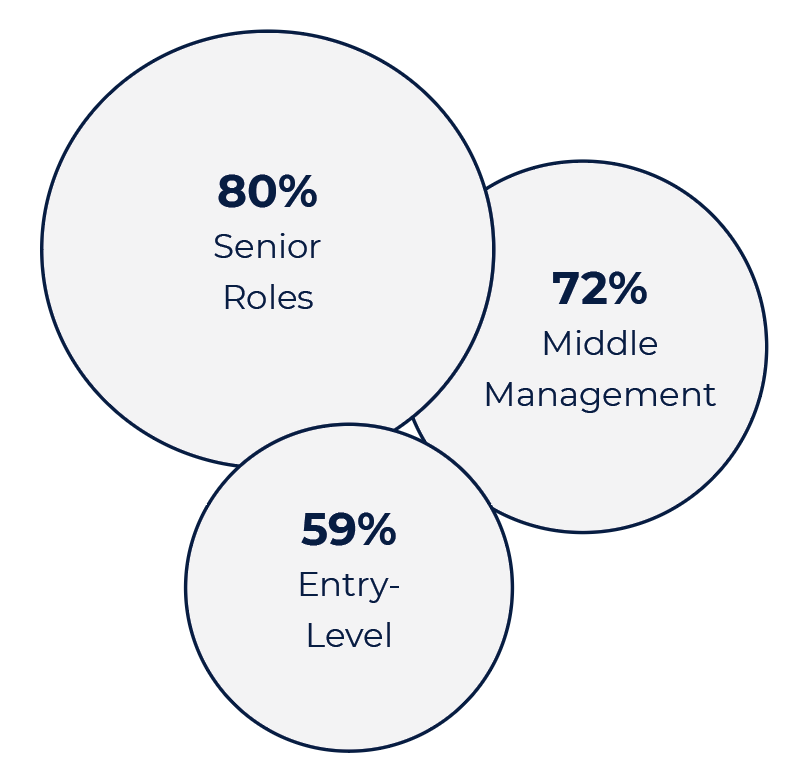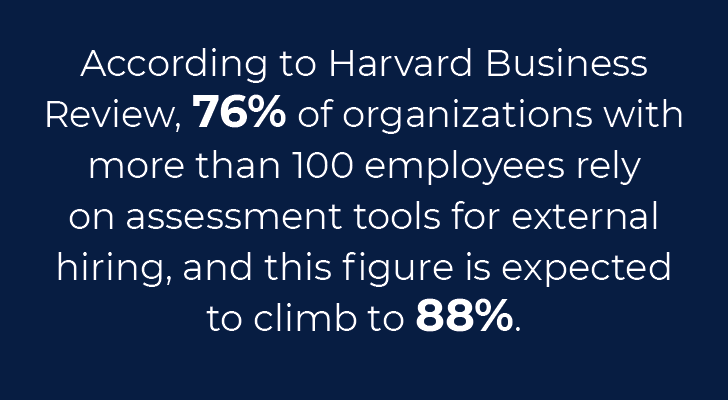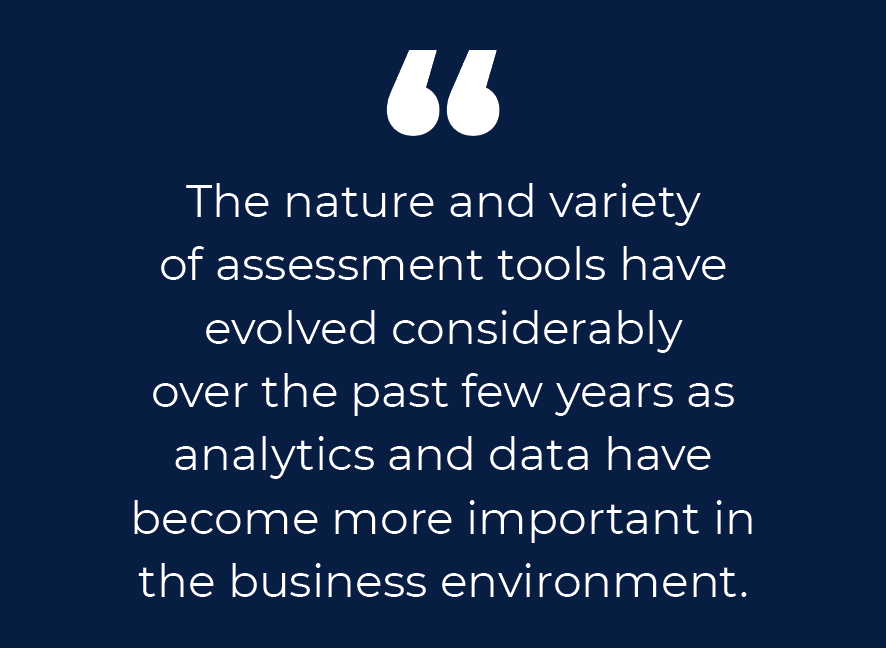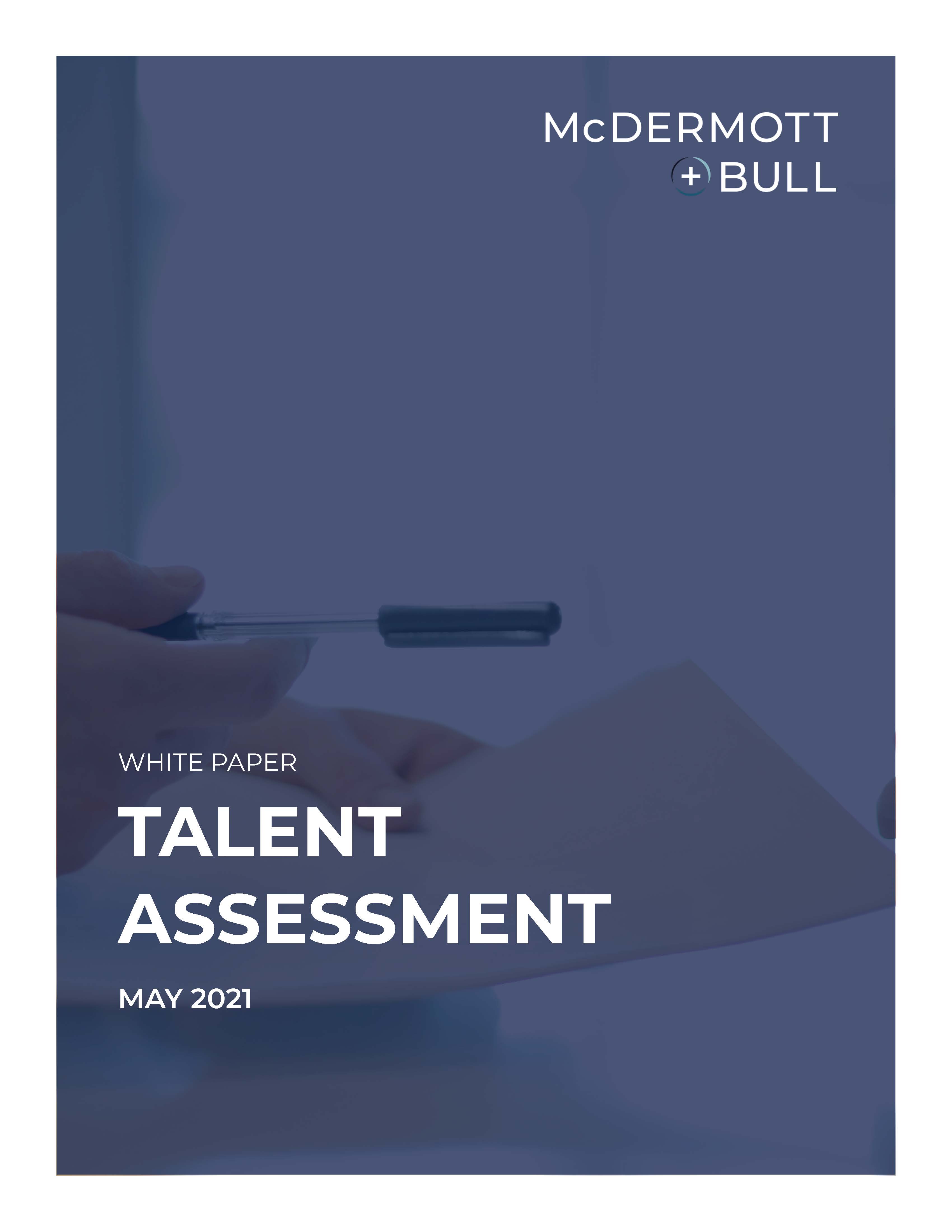You may have wondered what talent assessment tools are and how effective they can be in the hiring process. Employers like them because they can reduce the time and cost of recruiting new staff and can result in increased productivity, cost savings, and better retention among top employees.
Formal assessments can be used to hire new employees, evaluate current employees for different roles, identify employees with high leadership potential, and understand talent strengths and gaps. The term “assessment” may encompass a wide variety of tools, including online test taking, resume review, application processes, personal references, background checks, and interviews. Few candidates like a drawn-out hiring process, so organizations often use a broad array of techniques to select the right talent assessment tool. Advancements in technology have made all types of assessments more user-friendly and accessible to a wider audience. “With remote access, it’s easy to give applicants access to these assessments and you can reach a greater candidate pool,” said Andrea Espy, a Corporate Leadership Coach at Andrea Espy Consulting, LLC. “It is easier for employees and candidates to engage in these assessments, and, as a result, we have a richer database.”

Tools can cover everything from personality and aptitude tests to technical and written tests. According to Harvard Business Review, 76% of organizations with more than 100 employees rely on assessment tools for external hiring, and this figure is expected to climb to 88%. Global estimates suggest that tests are used for 72% of middle management positions and up to 80% of senior roles, compared to 59% for entry-level positions. While the use of immersive, personalized assessment experiences is on the rise, “Employers need to have a rational basis for doing these assessment tests and they should avoid unnecessary tests,” said Jina Lee, employment law attorney at Jackson Lewis in Irvine.
“They should make sure assessments are closely tied to what the person will do in the role and what skills are expected of them. Assessments need to be well tailored to assess a candidate’s strengths and traits, otherwise employers could risk losing diverse and qualified candidates.”
In Lewis v. Chicago (2010), the case claimed that a group of African American applicants for firefighter jobs in Chicago were unfairly excluded in the city’s competency assessment tests. As a result, the Disparate Impact Claim was created to prove employment discrimination based on the effect of an employment policy or practice rather than the intent behind it. “When hiring,” Lee added, “there’s always a possibility of disparate impact on specific groups, yet there is no way to completely shut down this risk.”
According to the Society for Human Resource Management’s Effective Practice Guidelines Series, the first thing a company needs to do is complete a thorough job analysis. This will identify critical work activities and/or competencies. Once you understand the job requirements, you can then select assessments that measure the most critical work activities. For example, is the assessment goal to select someone to perform a specific job or to predict employee potential for a future leadership role?
Job analysis should then be followed by a review of the various types of assessment tools available. The nature and variety of assessment tools have evolved considerably over the past few years as analytics and data have become more important in the business environment. More tools are now accessible online, on demand, and with immediate reporting and feedback.
Once an organization has analyzed the job position, they need to match the selection tools to what needs to be measured. If you’re hiring for a position that requires certain competencies, then you match the tools to the competencies required. For example, you would want to hire an accountant who is good at math and is detail-oriented. An article by Schmidt and Hunter in 1998 shows that general mental ability is the strongest predictor of training performance and job performance, followed by integrity assessments, and then assessments of conscientiousness. Several of the main talent assessment companies offer their own approach.


The Predictive Index
Companies can pay an annual subscription fee to The Predictive Index to run as many assessments as they like. The Predictive Index is often used upfront to reduce an applicant pool and to reach viable candidates. For each job profile, an assessment will be built and pushed to every applicant, or a filter will be put in place to funnel a test to only the top 20% of applicants.
The Birkman Method
“There are some tools available on the market that are expressly designed to give the hiring manager a recommended or not recommended finding for the position at hand,” said Rob Thompson, Head of Global Direct Sales and Marketing at Birkman International. “These can be used as a hurdle that the applicant must cross to be further considered for the position.”
The Birkman Method, however, is not recommended to be used to select out applicants, but instead should be used to help identify those applicants who might best fit a position or organization. “When used for selection, we recommend that the client validate its use within their own selection system and use the Birkman results as a single data point along with other considerations, such as experience, education, and structured interview,” Thompson explained. “We consider the true value of The Birkman Method to be the development of talent.”
When Pulakos, E.D. (2005) released a summary regarding the efficacy of various selection tools, Thompson noted that this study does not mention unstructured interviews, which have low validity and higher adverse impact and are therefore not recommended.
DiSC Profile
In addition to being a leadership coach, Andrea Espy is certified in DiSC, which assesses four behavioral styles: Dominance, Influence, Steadiness, and Conscientiousness. Espy explains that the DiSC model allows an organization to learn about employees’ workstyle or behavioral tendencies. Many organizations also use DiSC to gain insights about prospective candidates to guide and inform a more robust selection process — not to be used as a screening tool. “It looks at people’s behavior, what drives that behavior, and which behavior is most dominant in certain interactions,” Epsy said. Organizations will often use DiSC profiles to look at interpersonal dynamics to analyze different styles. For example, they may use the profile to find out how a candidate will interact in a team setting or in a direct report relationship.
DiSC generally comes into play late in the process when a company has narrowed its search down to the final two or three candidates and wants to explore who will be a good team and culture fit. A company may hire an independent consultant like Espy to help. “I would send the final two candidates this assessment which they would complete online. I’d then pull the reports and walk the hiring manager through these reports to help them proceed with the selection process,” she added. Knowing more about the candidates’ style will allow the hiring manager to ask more targeted questions about how they will handle certain situations they may face and how their unique style will contribute to the success of the team and organization.
The Hogan Assessment
Though Hogan Assessment Systems began as a small startup, it has now served more than half of the Fortune 500 companies. Its three core personality assessments are used to generate both off-the-shelf and customized reports based on the assessment results.
“Assessment tools have changed in a variety of ways since our company was founded in 1987,” said Ryne Sherman, Ph.D., Chief Science Officer at Hogan. “Perhaps the most dramatic change was going from paper-and-pencil to online, web-based testing platforms. More subtly, assessments have changed in response format, from mostly true-false items to five- or four-point rating scales. Scoring behind assessments have also changed with growing databases and applications of machine learning to make them more efficient than ever before. Finally, modern technology is being used to fully automate the assessment process by analyzing public social media profiles, online behavior, facial features, voice prosody, and more.”
At the same time, he added, the predictive validity of assessments — their ability to predict outcomes such as job performance and unsafe behavior — has not changed much. “No matter how personality is assessed, it remains a consistent predictor of performance,” he concluded.

Types of Assessments
There are certain types of assessments that are used regularly in hiring for all types of jobs in all sorts of organizations that can be administered across different devices. Sometimes, trained evaluators do the scoring, but mostly assessment and feedback are automated. According to the Society for Human Resource Management, the main types of assessments cover the following:
Job Knowledge
These assessments measure critical knowledge areas and test technical knowledge. These assessments can be used for certification and licensing too. They typically consist of multiple-choice questions but sometimes include essays.
Cognitive Ability
These assessments typically consist of multiple-choice questions that measure various mental abilities, such as verbal and numerical ability, reasoning, and reading comprehension.
Personality
These assessments tend to measure if you are conscientious, extroverted or introverted, open to new experiences, and emotionally stable.
Accomplishment Record
Candidates write about their accomplishments in areas like planning and organizing, customer service, and conflict resolution.
Automated Writing
These assessments measure various competencies beyond writing itself, including a candidate’s persuasiveness, critical thinking, attention to detail, commercial focus, and political savvy.
Situational Judgment
Tests may present candidates with situations they could encounter on the job. They could be asked to select the most effective way to handle a situation from different points of view.
Integrity
These assessments measure attitudes related to honesty, trustworthiness, and dependability. They typically come in a multiple-choice format. A question about the number of volunteer organizations you belong to, for example, could indicate a willingness to help others.
Benefits to All This Data
Technology has given rise to vast available data on individuals, as well as new tools that allow organizations to mine that data. For instance, social media and other data collected can be used for predictive analytics, modeling trends, assessment of candidates, and discovery of additional insights. I believe technology will continue to play a large role in the hiring process in the future, particularly in the way assessment methods and practices are carried out. These assessments provide valuable supplemental data on candidates, however, at the end of the day, interviews remain the most effective predictors of job performance.
About the Author
Brandon Biegenzahn
President
biegenzahn@mbexec.com
Brandon Biegenzahn is the President of McDermott + Bull and the chair of the firm’s Financial Services Practice Group. Brandon is a corporate attorney who practiced with Sheppard, Mullin, Richter & Hampton, and Buchalter Nemer in their corporate finance departments. Brandon received his Bachelor of Arts from the University of Southern California and his Juris Doctorate from Penn State.



